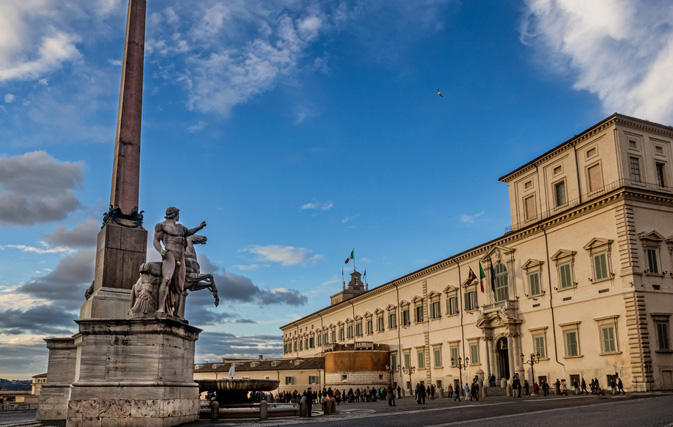ROME — Popes and royals resided there in glorious splendor. An emperor dreamed in vain of doing so, too. Nowadays presidents live there.
The Quirinal Palace, crowning one of Rome’s ancient hills, is a storied gem whose architectural marvels, elegant gardens and fascinating history— four conclaves to elect pontiffs were held there in the 19th century _ have been much ignored by tourists. It’s not their fault. Until recently, only a small portion was open to the public, and not very frequently.
But President Sergio Mattarella, a constitutional law expert from Sicily who was elected as Italy’s head of state this year and is the Quirinal’s current resident, thinks the palace should also be the “home” of all Italians.
Starting in late June, tourists have been able to do what eluded Napoleon: step foot inside and stroll through sumptuous salons where popes sought to dazzle ambassadors and, later, where kings and queens entertained royalty in opulent fashion.
The longer of two tours takes in the impressive royal housewares collection, thousands of exquisitely crafted porcelain and other tableware, including a set for a train trip taken on a royal honeymoon. The Grand Ballroom’s chandeliers are so dazzling they could qualify for a tour in themselves.
Sometimes, visitors run into the president.
Standing ramrod straight as visitors pass through palace portals are the Corazzieri, the Quirinal’s rough equivalent of the Swiss Guards. These towering guards with plumed helmets are more than ceremonial. Members of the paramilitary Carabinieri force, Corazzieri are an elite corps whose job is to protect the president. Their skills can include horsemanship, sharpshooting, rock-climbing, martial arts and explosives expertise.
The Quirinal Hill gives a straight-line view of the dome of St. Peter’s Basilica across town. The palace was built, starting in the late 16th century, on the grounds of what had been the villa and vineyards of a cardinal. The pontiffs were hardly the first to appreciate choice real estate. Temples to the ancient Roman gods were erected on the hill in the fourth century B.C., including one to the goddess of health. The hill provided relief from the mugginess of the lower lying city.
Popes commissioned architects and artists to construct and adorn the palace, and by the end of the 16th century, it had become the summer residence of popes. No severe or silent retreat was this: In the gardens, Pope Clement VIII had constructed the monumental and musical Fountain of the Organ.
One of these papal commissions was the Pauline Chapel, whose gilded stucco decorated ceiling is sublime.
But it was tough finding artists to decorate a chapel seen as a rival to the Vatican’s Sistine Chapel, whose ceiling was frescoed by Michelangelo.
Artists “didn’t want to accept what amounted to a challenge of Michelangelo,” says Quirinal Palace staff art historian Louis Godart.
Paul V had commissioned the chapel’s construction in 1615 to give the Quirinal a chapel with the same dimensions of the Sistine chapel, so seating arrangements for papal ceremonies could stay unchanged from Vatican City to the Rome palazzo.
Also worth risking a stiff neck for are the mirrored ceilings of the Napoleonic Apartments. Napoleon’s troops occupied Rome in 1809, captured Pope Pius VII and deported him to France. Napoleon intended for himself and his family to sojourn in the palace when he came to Rome. But he never did. Suffering great military losses, Napoleon’s fortunes nosedived, along with his dream of living in the Quirinal.
Pius VII returned. But a few decades later, the popes were evicted for good. With the unification of Italy and the demise of once powerful papal states, the royals took up residence, with the Savoy family quick to replace some of the more austere papal touches with rococo twists.
The long tour includes a carriage collection, with smaller models for royal tots, including one in Louis XVI style.
Italians voted in a referendum following World War II to be done with the monarchy and in favour of a republic. Starting in 1948, presidents began working, and, many of them, also living in the palace.
